P&O 180: Stitched Memories
For the month of Remembrance, our conservator, Anna-Klara Hahn re-examines a rare survival from World War 1, a sailor-made wool work.
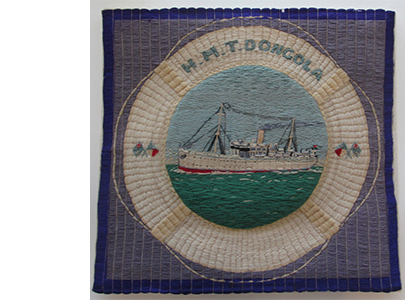
This wool work depicts the P&O passenger liner, DONGOLA (1905), during her service as a troopship in World War 1
The DONGOLA was first chartered for trooping in 1906 and was employed on trooping duties when war was declared in 1914. In 1915 she was requisitioned and operated as makeshift hospital ship at the Dardanelles in the Aegean and later as a transport, mainly off the coast of East Africa. DONGOLA was one of many of P&O ships on war service. Almost two thirds of the entire P&O fleet served as troop carriers, hospital ships, store and supply vessels and even messengers during the War.
The Wool Work
These wool pictures, affectionately known as woollies, were predominantly made by British sailors from the 1840s to the end of the World War 1. They would have been worked on during the long hours at sea or in port. Some of the larger and more elaborate woollies are thought to have been created by retired crew.
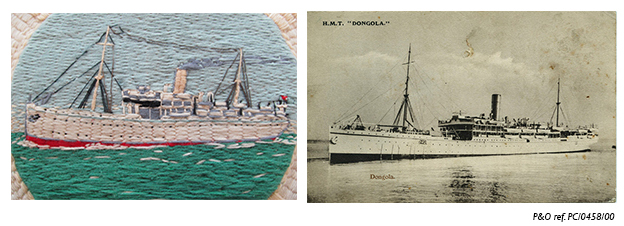
The woollies generally depict ships in great detail and often surrounded by life rings, portholes, flags, royal emblems, heraldic symbols or coats of arms. These symbols were the language of the sea, giving information about the vessels nationality and ownership and providing clues as to their origin. The two flags, the P&O house flag and the blue ensign, the British naval auxiliary flag, on either side of the life ring were also typically found on postcards from this time as seen below.
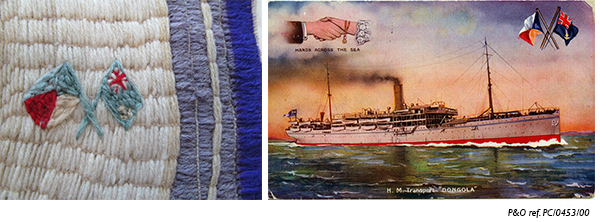
However, little is known of the highly skilled makers themselves, as most of them are left unsigned.
Apart from the rich vibrant coloured Berlin wool that was used to make the majority of the wool works, other common materials included sail canvas, duck cloth, simple linen and cotton fabric, all of which could be found on board a ship. The sewing methods included cross stitch, chain stitch and darning with long stitch, the latter quickly became the preferred method, being faster and more economic on wool supplies.
The rare wool works that have survived are often very faded, with broken threads and signs of insect damaged. Our DONGOLA wool work was in the same condition before it was carefully conserved in 2014 ready for our World War 1 anniversary exhibition.
Conservation of the Dongola Wool Work
The wool work was framed on arrival in the conservation studio, and required de-framing to be examined further to assess its condition and devise a treatment plan.
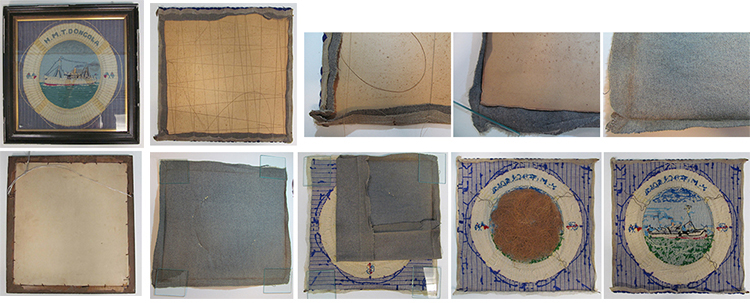
Already during this initial stage it was apparent that the dyed yarns had faded significantly as the unexposed edges and the verso showed the original tone of the yarns. The background, wasn’t grey at all but a beautiful dark blue.
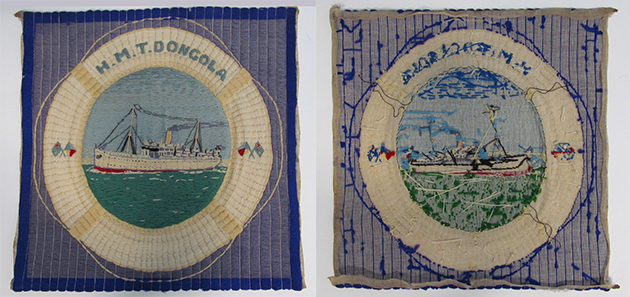
Furthermore, the verso showed that the light blue and green in the sky, sea and flag would also have been stronger in tone.
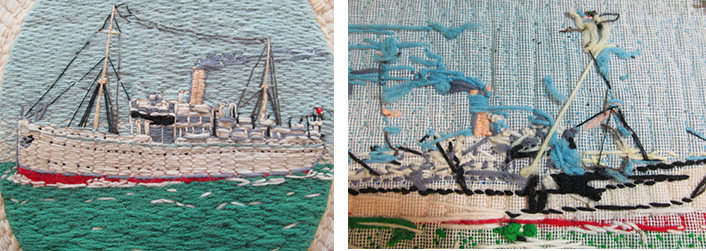

The wool used in our wool work is believed to be early synthetically dyed with so called aniline dyes which are very light sensitive and prone to fading. The development of these and other chemical dyes, in the mid-1850s led to an explosion in even greater range of colours which could be purchased as a less expensive price.
The following digitally-enhanced image shows what the wool work might have look like when it was made.
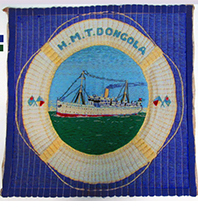
The three-dimensionality of the wool work was created with some additional padding between its grey, backing fabric and the backboard. This padding had slipped and the board was warped and weakened, both factors contributing to distortion and poor condition of the wool work. After further examination and the detailed recording of the materials and its construction, it was decided to dismantle the wool work in order to clean and stabilise its condition.
Once the threads were released, the board was removed and the backing fabric lifted, to reveal thin like hair and straw were peeking out of the centre, of the padding. The hair is likely to be horse hair.

Elsewhere, there were traces of insect damage and debris and the wool work was covered in a layer of dust. It was therefore extensively surface cleaned with a museum vac, working with low suction through a fine nylon mesh to avoid damaging the yarns. The work was assisted with strong working light, magnification, fine tweezers and brush.
Working slowly and methodically across the canvas and through the various layers of yarn, removing the surface dust and any moth debri. The overall appearance of the wool work was improved. The verso was also vacuumed, but required further cleaning once removed from the backboard.

To ensure the long-term preservation of the wool work it was decided to mount it on a new custom-made padded support board, which would provide it with sufficient support and the flexibility it requires.
The padded board was made of two museum grade boards, polyester wadding and unbleached calico cotton. A circular cushion (1cm thick wadding covered by calico) was sewn and placed accordingly in the centre of the board, held in place with a few singular stitches. The wool work was attached to this board with fine stitches along the edges.
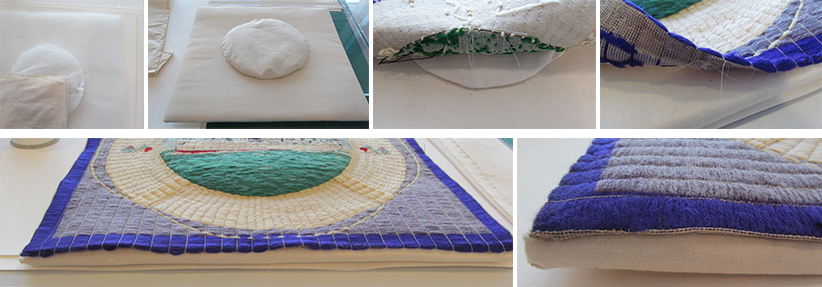
Once complete, the wool work, on its new padded support board, was framed in a modern box frame to form an important part of our World War 1 exhibition. When not on display the wool work is stored flat in an archival box.
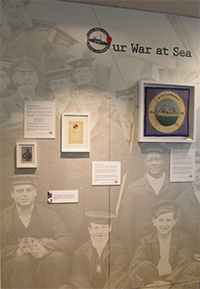
Read more about DONGOLA http://www.poheritage.com/Upload/Mimsy/Media/factsheet/93060DONGOLA-1905pdf.pdf
and our World War 1 Online Exhibition http://www.poheritage.com/the-collection




